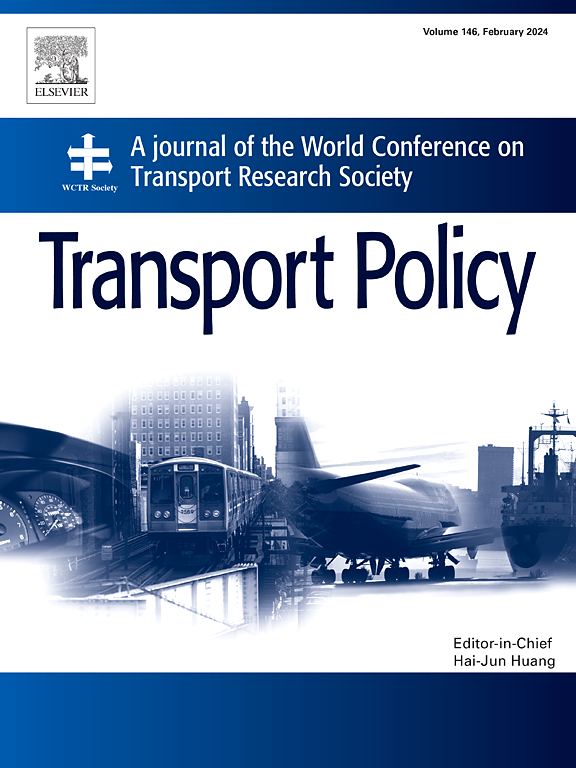A framework of success factors and barriers for urban car reduction in European cities
IF 6.3
2区 工程技术
Q1 ECONOMICS
引用次数: 0
Abstract
Cars and roads have helped create modern society. However, their use comes at a cost for cities and their residents, in particular with respect to liveability. To improve liveability, cities are implementing a wide range of measures. This paper addresses the challenges cities face in reducing urban car dependency and provides lessons from their experiences. Major research gaps exist around governance questions regarding real-world policy development to aid in the transition towards sustainable mobility.
Case studies in cities with comparable population sizes and experience in car-reducing measures, namely Copenhagen, Barcelona, Bremen, and Milan, provide new insights for policymaking, all to understand the context in which a policy can flourish and help policymakers make them more successful. These insights lead to a framework of success factors and barriers based on theory and practice for other policy makers to use.
Eight different success factors have been identified to overcome the five barriers and successfully implement their policies. Six originate from the literature and were confirmed in the case studies. The two final success factors of ‘the inarguability of schools’ and ‘the undeniability of hard evidence’, emerged from the cases.
In the cases interviewees identified and prioritised the links between these factors and barriers, and how the success factors can reduce the barriers. This research adds to the literature of real-world policy examples and includes issues of governance that policymakers may run into. The novelty is in the framework of success factors and barriers, based on the experiences of Western European cities with a comparable population size. The framework can be used by both policymakers and researchers to design and compare car-reducing policies.
求助全文
约1分钟内获得全文
求助全文
来源期刊

Transport Policy
Multiple-
CiteScore
12.10
自引率
10.30%
发文量
282
期刊介绍:
Transport Policy is an international journal aimed at bridging the gap between theory and practice in transport. Its subject areas reflect the concerns of policymakers in government, industry, voluntary organisations and the public at large, providing independent, original and rigorous analysis to understand how policy decisions have been taken, monitor their effects, and suggest how they may be improved. The journal treats the transport sector comprehensively, and in the context of other sectors including energy, housing, industry and planning. All modes are covered: land, sea and air; road and rail; public and private; motorised and non-motorised; passenger and freight.
 求助内容:
求助内容: 应助结果提醒方式:
应助结果提醒方式:


